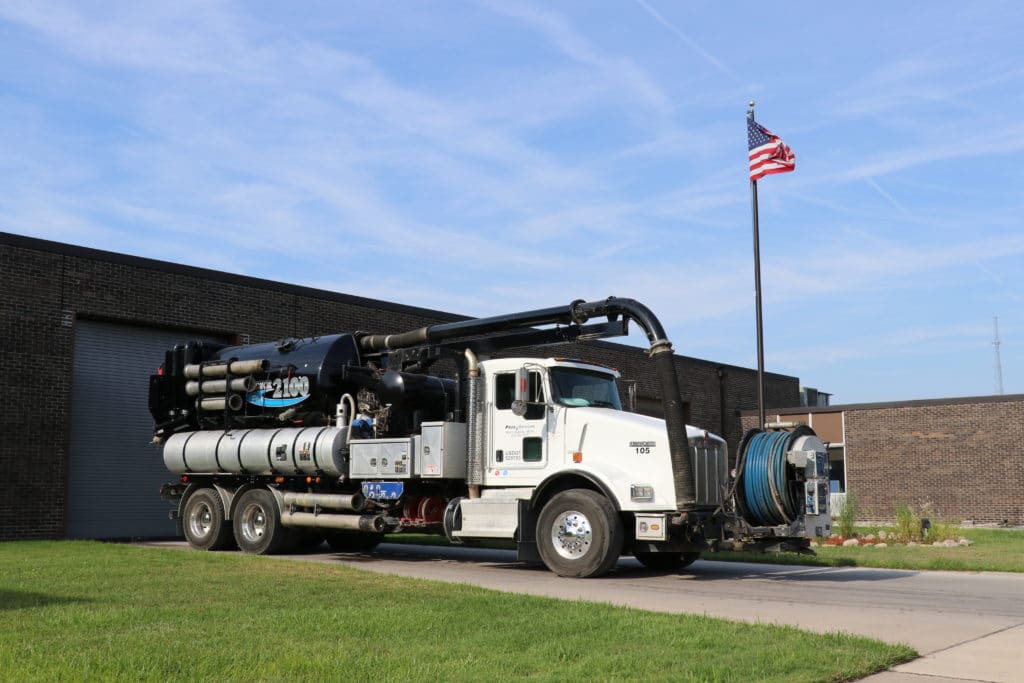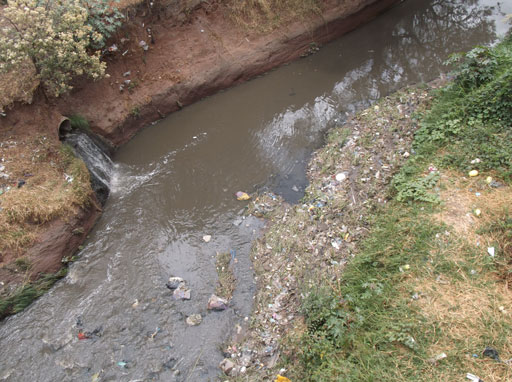Exactly How Liquid Garbage Disposal Functions: A Thorough Review of Methods and Technologies Used

Review of Fluid Waste Kind
The intricacy of fluid waste kinds demands a detailed understanding of their characteristics and ramifications for disposal. Fluid waste can generally be classified into a number of kinds, consisting of commercial, community, farming, and contaminated materials. Each group exhibits distinctive homes, calling for certain management methods to minimize ecological and health and wellness threats.
Industrial fluid waste originates from producing processes and often consists of a variety of contaminants, such as heavy steels, solvents, and organic substances. Community liquid waste, primarily making up wastewater from households and industrial establishments, has natural issue, nutrients, and pathogens (industrial wastewater treatment). Agricultural liquid waste, including runoff from farms, may consist of plant foods, pesticides, and animal waste, posing dangers to water quality and communities
Dangerous fluid waste is characterized by its toxicity, sensitivity, or possible to cause damage. Recognizing these varied fluid waste kinds is critical for creating efficient disposal approaches and making sure conformity with environmental policies.
Physical Therapy Methods

Testing is the preliminary action, where larger fragments and particles are removed from the liquid waste utilizing displays or grates. This process shields downstream devices from damage and guarantees smoother procedure. Adhering to screening, sedimentation makes use of gravitational pressure to separate solids from liquids. In sedimentation containers, larger fragments settle at the base, developing a sludge layer, while the made clear fluid can be further treated.
Filtration is one more vital method that entails passing the liquid via porous products, such as sand or membrane layers, to record smaller sized fragments. This action boosts the quality of the fluid, making it ideal for subsequent therapy procedures.

Chemical Therapy Methods
Chemical therapy methods are crucial for successfully managing fluid waste, particularly in dealing with liquified and colloidal impurities that physical techniques might not adequately get rid of. These methods utilize various chemical agents to neutralize, precipitate, or transform dangerous substances right into less dangerous types.
One common technique is coagulation and flocculation, where chemicals such as alum or ferric chloride are added to promote the aggregation of suspended particles. This procedure boosts sedimentation, permitting less complicated elimination of the resulting sludge. Additionally, oxidation processes, using representatives like chlorine or ozone, are employed to damage down intricate organic substances and microorganisms, providing the waste safer for discharge or more treatment.
Neutralization is an additional important technique, which best site readjusts the pH of acidic or alkaline waste streams to neutral levels, avoiding possible damage to downstream systems and the atmosphere. Furthermore, advanced oxidation processes (AOPs) use combinations of oxidants and ultraviolet light to weaken relentless toxins, attaining a higher degree of therapy performance.
Biological Therapy Processes
Biological therapy procedures play a critical duty in the monitoring of liquid waste by using microorganisms to break down organic matter and decrease impurity degrees. These processes can be extensively classified into aerobic and anaerobic treatments, each employing details microbial neighborhoods to attain efficient waste deterioration.
Aerobic therapy entails making use of oxygen to assist in the failure of natural products by bacteria. This process is generally implemented in triggered sludge systems, where aeration tanks provide a favorable environment for microbial development, bring about the oxidation of organic contaminants. The resultant biomass can be separated from dealt with effluent with sedimentation.
On the other hand, anaerobic treatment occurs in the absence of oxygen, relying on different microorganisms to break down raw material. This technique is especially advantageous for high-strength waste, as it generates biogas, you can try here a renewable energy source, while decreasing sludge production. Technologies such as anaerobic digesters are often used in industrial and local applications.
Both aerobic and anaerobic biological therapies not just lessen the environmental effect of liquid waste however also help with resource recuperation, making them important components of sustainable waste monitoring methods. Their adaptability, efficiency, and efficiency support their widespread application throughout various industries.
Emerging Technologies in Disposal
Innovative strategies to fluid waste disposal are rapidly developing, driven by innovations in technology and an increasing focus on sustainability. Amongst these emerging modern technologies, membrane layer bioreactors (MBRs) have acquired traction for their ability to integrate organic therapy with membrane filtering, leading to top notch effluent that can be reused in numerous applications. MBRs enable smaller sized impacts and much more reliable procedures contrasted to conventional systems.
Another promising growth is making use of anaerobic digestion incorporated with nutrient recuperation technologies, which not only treats fluid waste however likewise generates biogas and recovers useful nutrients like nitrogen and phosphorus. This dual advantage boosts resource performance and decreases ecological influence.
Furthermore, progressed Check This Out oxidation processes (AOPs) are being adopted for the degradation of complicated organic contaminants. These approaches make use of effective oxidants and stimulants to damage down impurities at the molecular degree, offering an extremely efficient remedy for difficult waste streams.
Furthermore, the integration of expert system and maker learning in waste administration systems is optimizing operational performance and predictive maintenance, resulting in reduced costs and boosted environmental conformity. These technologies show a significant shift in the direction of even more effective and lasting fluid garbage disposal methods.
Conclusion
In final thought, efficient liquid waste disposal requires a detailed understanding of numerous techniques and modern technologies. By constantly advancing these methodologies, it ends up being feasible to attend to the expanding obstacles connected with fluid waste, ultimately adding to ecological protection and resource healing.
Liquid waste disposal is a critical facet of ecological management, needing an extensive understanding of various techniques and technologies tailored to different waste types. Fluid waste can extensively be classified right into a number of types, including commercial, community, agricultural, and hazardous waste. Agricultural liquid waste, including overflow from ranches, might have fertilizers, pesticides, and animal waste, posturing dangers to water top quality and environments.
Different physical treatment techniques play an important function in handling liquid waste effectively - industrial wastewater treatment.In final thought, effective liquid waste disposal demands an extensive understanding of different methods and innovations